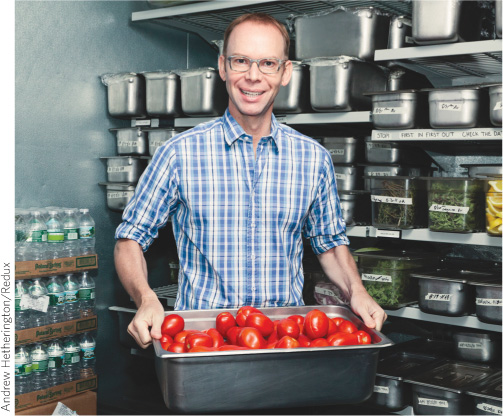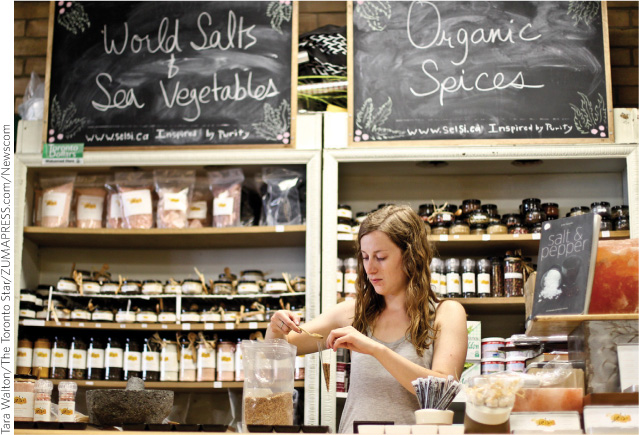There are many tactics for achieving sustainability.
Changing the way we do business is not going to be easy. Even Interface has progressed slowly, despite its strong desire to become sustainable. Start-up or upgrade costs can be substantial, and even though improvements may pay for themselves in the long run, many businesses simply do not have the funds to pay for them. Plus, they may find themselves at a competitive disadvantage with businesses that are not trying to internalize costs. Consumers also have a role to play. For example, recycled paper’s higher cost may more closely reflect the true cost of paper, but if consumers are not willing to put their buying dollars behind their environmental ideals, businesses that make and sell paper from trees will still be more successful. In other words, it will take changes from both consumers and producers to put business and industry on the path to sustainability. But there are things that can be done to level the playing field.
Governments can encourage sustainability by providing incentives for businesses to account for true costs rather than just internal costs. This could be accomplished by taxing companies based on how much pollution they generate, subsidizing environmentally friendly processes, or giving out pollution “permits” that companies could sell if they release less pollution than they are allowed (cap-and-trade; see Chapter 20). For instance, if there is a pollution tax, it will be passed on to the consumer, who then decides whether to buy the product. The manufacturer that minimizes waste production and relies on lower fossil fuel inputs than its competitors would be able to meet the regulations at the lowest cost, offer lower prices, and, as a result, have a major market advantage. While promising, these policies can be complex to implement because external costs are hard to quantify (How is a pollution tax fairly assessed?) and because they may put a burden on smaller manufacturers that have less ability to absorb the cost of upgrades; passing these costs on to the consumer also stresses low-income households.
113
According to Anderson, the consumer needs to know how a good or service is made—what the cradle-to-grave environmental impact of that product is. “You lay out for the consumer everything that goes into that product, and you lay it out for your competitors too—it’s a totally transparent revelation of how you made that product, and what that footprint is at every step,” he explained. This is hard to achieve when we buy many products made in faraway places and shipped over long distances.
One way to communicate this information is through ecolabeling. But consumers have to be wary of labels because as “green” products become more attractive to consumers, more companies engage in greenwashing—claiming environmental benefits for a product when they are minor or nonexistent. Fair trade items are, however, more likely to be sustainably produced. For a product to be certified as fair trade, workers must be paid a fair wage and work in reasonable conditions to produce the goods or services. Share programs are another useful option for items that people need infrequently, such as a car for those who live in a large city. Rather than buying, owning, and then storing the product for a large part of the time, consumers share ownership and use the product only when they need it.
ecolabeling
Providing information about how a product is made and where it comes from. Allows consumers to make more sustainable choices and support sustainable products and the businesses that produce them.
114

“God almighty, we’re on the wrong side of history, and we’ve got to do something.”
–Ray Anderson
Although Interface has come a long way since 1994, it is still working hard to achieve its sustainability goals. In June 2011, the company began producing its first 100% non-virgin fiber carpet tiles, made from reclaimed carpet, fiber derived from salvaged commercial fishnets, and postindustrial waste. In addition to enjoying substantial energy savings, Interface has reduced waste some 94% since 1996 and has several LEED-certified facilities. (LEED is an internationally recognized green building certification system; the acronym stands for Leadership in Energy & Environmental Design.) Practices like intercepting industrial waste destined for landfills have a positive effect, while other efforts lessen the company’s overall negative impact: less toxic glues, less carpet waste. All the while, Interface is still the world’s leading manufacturer of commercial carpet tiles, and its 2010 operating income increased 47% over 2009. “I think we’re on the right track, and we’ll keep on going,” says Anderson, who stepped down as the company’s CEO in 2001 but still played the role of the company’s conscience until his death in 2011 at the age of 77. “We’ll get to the top of that mountain.”
KEY CONCEPT 6.8
Transparency in how a business operates will allow consumers to make better choices and level the playing field for businesses that are trying to operate more sustainably.
115

Select References:
Anderson, R. (1998). Mid-course Correction: Toward a Sustainable Enterprise: The Interface Model. Atlanta: Peregrinzilla Press.
Anderson, R. (2009). “The Business Logic of Sustainability,” www.ted.com/talks/ray_anderson_on_the_business_logic_of_sustainability.
Costanza, R. et al. (1997). The value of the world’s ecosystem services and natural capital. Nature, 387: 253–260.
World Wildlife Federation. (2012). “Living Planet Report, 2012,” http://wwf.panda.org/about_our_earth/all_publications/living_planet_report/.
PERSONAL CHOICES THAT HELP
You have an impact on creating a sustainable society. Every time you buy a product or service, you are telling the manufacturer that you agree with the principles behind the product. You can use your purchasing power to show companies that people are interested in good-quality products that support environmental and social values.
Individual Steps
Reduce the amount of stuff you accumulate by buying fewer items and by choosing products that are well made and last longer.
Use the GoodGuide app on your smart-phone to scan product bar codes and see how the products rank on different scales of environmental impact, social responsibility, and health.
Ask your local food store or pharmacy to stock fair trade–certified products if it doesn’t already.
Instead of buying a new or used car, join a car-share program like Zipcar.
Group Action
Get together with family and friends and write a letter to your favorite companies, asking them to reduce their ecological footprint. You can ask them to become more transparent by publishing how their business practices impact the environment.
Policy Change
Start a blog or Facebook page to chronicle the changes you make in your buying habits and encourage others to do the same. Discuss the companies whose environmental policies you agree with.

116